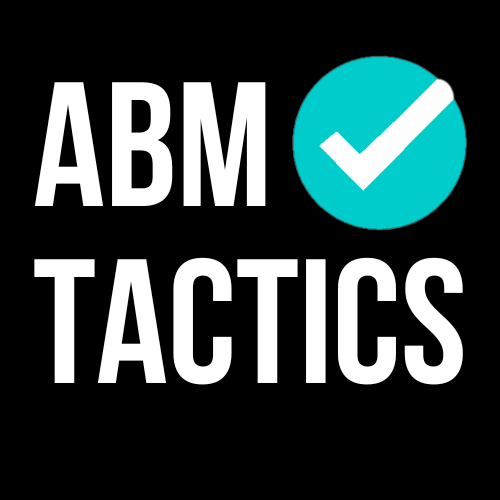I’m stoked to bring you a special newsletter Q&A with my friends over at UserGems.
Over the course of an hour I spoke with Trinity Nguyen, CMO and Isaac Ware, Director of Demand Generation about all things AI and ABM.
Why do you think relationship data is so critical for modern ABM strategies compared to more traditional firmographic or keyword intent data?
Isaac: I think the best way you can actually align with your sales team as a marketer around an ABM program is by focusing on those relationship signals, especially in early programs.
It's how they're already selecting accounts.
Being able to build your program around the way that they're already prospecting, or how your top 1% BDRs are already prospecting is a huge immediate win for a program.
The second piece is to get buy-in from leadership on your ABM program. The reality is you have to get revenue out of your ABM program if you want more budget and you want more headcount and you want more resources for your ABM program.
Being able to show early success with previous champions and reviving closed-lost opportunities is a great way to get those early wins so you can expand your ABM program.
When you’re building or refreshing a target account list, how do you and your team incorporate relationship signals into the account selection process?
Isaac: For us, we use UserGems for our scoring model.
So we ingest all of our closed-won opportunities and we let the AI take a look at what all the similarities are.
We use over 600 different scores or scoring variables on that side of things to get our list in terms of ICP fit.
Then we take it down another level and look at those account-level scores, which incorporate things like reviving closed lost opportunities, have they attended the same events as us?
And then we go down to the contact level where we're looking at how many champions are at that account, how many previous users, all those champion job changes, new hires and promotions and the buying roles.
So we kind of take the traditional approach of, yes, fit, but then we take it a step further and go after those signals that the BDRs care about and that make those accounts more likely to convert at the contact level.
Signal-based ABM is something a lot of teams talk about, but few operationalize well. How do you recommend teams approach prioritizing signals and how should you decide when they should trigger inclusion in an ABM play?
Trinity: So, signal-based anything won't scale without AI. They have to go hand in hand. Because when people think of signal-based ABM, they think about one signal.
Which signals to go after first and bring into the ABM program? The answer typically is that it depends on what are [the] relevant signals for your business and your buyers?
Ideally, you have some kind of tool or system or process to look back into your existing customer base to see the fit criteria that is common across your customers.
So that's straightforward.
Then the harder one is what kind of signals they had before they created an opportunity with you?
That's where it gets really, really hard. If you can get a tool or a data team or someone to help you figure that piece out, that will tell you what kind of signals you should look out for, for your account scoring for the ABM program.
Isaac: The other piece I think I would add in too, especially for people standing up their first ABM program is start with those human conversations.
But then what we've seen is once you get past three to four signals is when things start falling apart for reps in terms of personalization.
So yes, great starting point for those first maybe 20 accounts while you're still trying to figure out the process, [and] get buy-in.
Then beyond that, as you start layering in more and more signals to get these accounts that convert at a higher rate, that's when you have to bring AI in to prioritize those signals and sort through that and then take it a step further in the execution and personalization of the outbound.
At some level, the human brain can only handle so much, especially when these reps are reaching out to hundreds of accounts in a late-stage ABM program.
Implementing AI into ABM is a hot topic, in which areas does AI come into play with UserGems’ signal-based ABM strategy?
Isaac: AI comes in with account prioritization, contact prioritization, signal aggregation.
What would you say is the split between human-led outbound and Gem-E your AI outbound tool?
Isaac: The email side is turning close to 100% AI. And we get compliments on that, like, how did you train your reps to personalize like this?
Co-pilot on the human side with outbound or cold calling, LinkedIn, and then AI almost fully on the email side.
Trinity: ABM has a marketing component and then the outbound component. But the marketing side, I would say it's 50-50, so 50% is the account score signal aggregation.
On the outbound side, I would say 70% is AI and 30% is human because like what Isaac said, they spend time on calls, social selling, inviting to events.
70% is done by AI and 30% on human, that's how we can scale. The volume of contacts being touched by each of our reps is higher than most companies I've talked to because we take away the 70% of busy work.
If you were advising a marketing leader who’s starting to think about their first ABM program or how to implement AI into their current ABM strategy, what’s the one place you’d tell them to start and why?
Isaac: Avoid AI almost completely for those first 20 accounts that you run. The reason being is you need to have a starting point for when you do it.
But you need to know the in-depth element of every single aspect of your ABM program as a person to be able to manage humans to help manage the ABM program, but also to help train and manage the AI.
Trinity: Start really small. That's why I try not to share that we're doing (1:1 ABM) for 600 accounts every month because every marketer is like, that sounds amazing.
Otherwise, what are you doing? Sort that piece out and then once you figure out the process, bring people.
Because marketing and outbound need to work together. You start layering, like Isaac mentioned earlier, a few signals based on the anecdotes you hear from your team, Gong or Clari recordings, all of that stuff, to figure out like a couple signals to also train your team.
And when you want to run, that's when you can bring in AI and you can just suck all the data in, [and] scale it.
But by then the team knows exactly what to do. You give them a cheat sheet, like a co-pilot, and that just runs.
And that's literally been our journey. If I zoomed out, that's literally what we did.

Author: Tyler Pleiss



